Iceland is one of those places that leaves a lasting impression. Because of the power of its nature, the inhospitable landscape, the harsh climate, and also because of how difficult it can be to travel around.
Here I’ll tell you about my 13-day campervan trip around the island, and at the end I’ll leave you with a series of reflections that I think you should consider before traveling to this country.
Day 1 – Seljalandsfoss, Gljúfrabúi, Skógafoss, Dyrhólaey, Reynisfjara
We spent the first night at the airport campsite. The next morning, we went to the supermarket and set off.
First stop: Seljalandsfoss, a towering waterfall behind which you can walk (and get soaked). Nearby is Gljúfrabúi, hidden among the rocks, which looks like something out of a fantasy film.
Then we went to Skógafoss, another impressive waterfall. After that, we headed to the south coast: Dyrhólaey, with its stone arch and spectacular views, and Reynisfjara, the famous black sand beach with basalt columns.
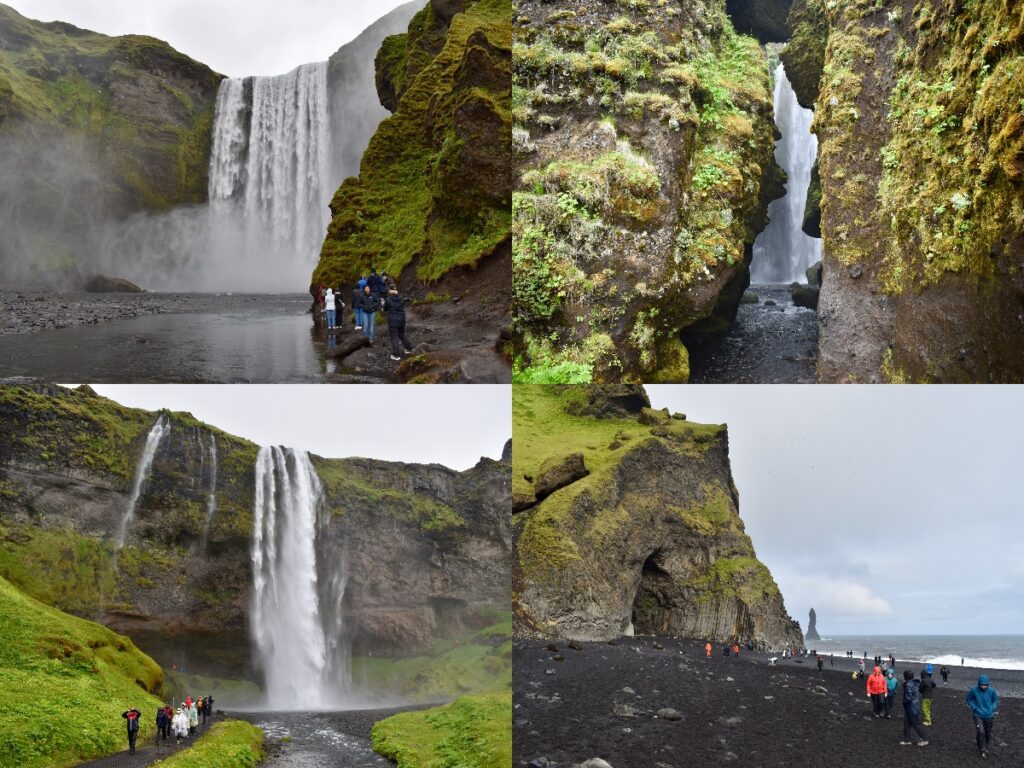
Day 2 – Eldhraun, Fjaðrárgljúfur, Dverghamrar, Svartifoss, Skaftafellsjökull
We started the day by crossing the Eldhraun lava field, a vast expanse covered in moss. We stopped at the Fjaðrárgljúfur canyon, which is absolutely magical, and then at Dverghamrar, some basalt formations next to the road.
Once inside Skaftafell Park, we hiked to Svartifoss, a waterfall surrounded by black basalt columns, and then reached the tongue of the Skaftafellsjökull glacier, which is very impressive. By this point, it was raining and very foggy, so the photos weren’t very idyllic.
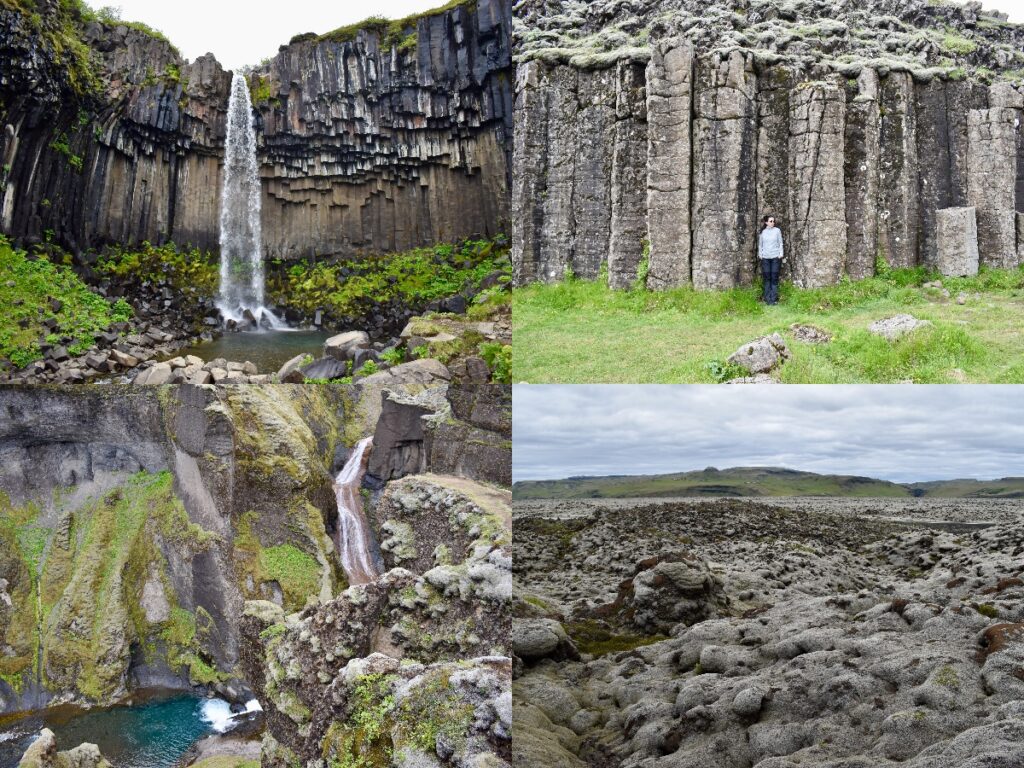
Day 3 – Svínafellsjökull, Diamond Beach, Jökulsárlón, Skútafoss, Hvalnes, Hænubrekkufoss
We approached the Svínafellsjökull glacier, which is less touristy and very wild. Then we stopped at Jökulsárlón, where icebergs float in the lagoon and cross over to Diamond Beach, where they rest on the black sand like precious stones.
At this time of year, Diamond Beach is not really worth visiting because the pieces of ice you will see are very small.
We also visited the Skútafoss waterfall, pass by the Hvalnes lighthouse, and end up at Hænubrekkufoss, another hidden waterfall that was well worth the effort.

Day 4 – Borgarfjörður, Rjúkandafoss, Dettifoss
We crossed to the east, climbing up to Borgarfjörður, a fjord with a viewpoint overlooking a puffin colony. We stopped at Rjúkandafoss and ended up at Dettifoss, which is one of the most powerful waterfalls I have ever seen.
The Dettifoss waterfall appears in the opening scene of the movie Prometheus (2012), directed by Ridley Scott and part of the Alien universe.
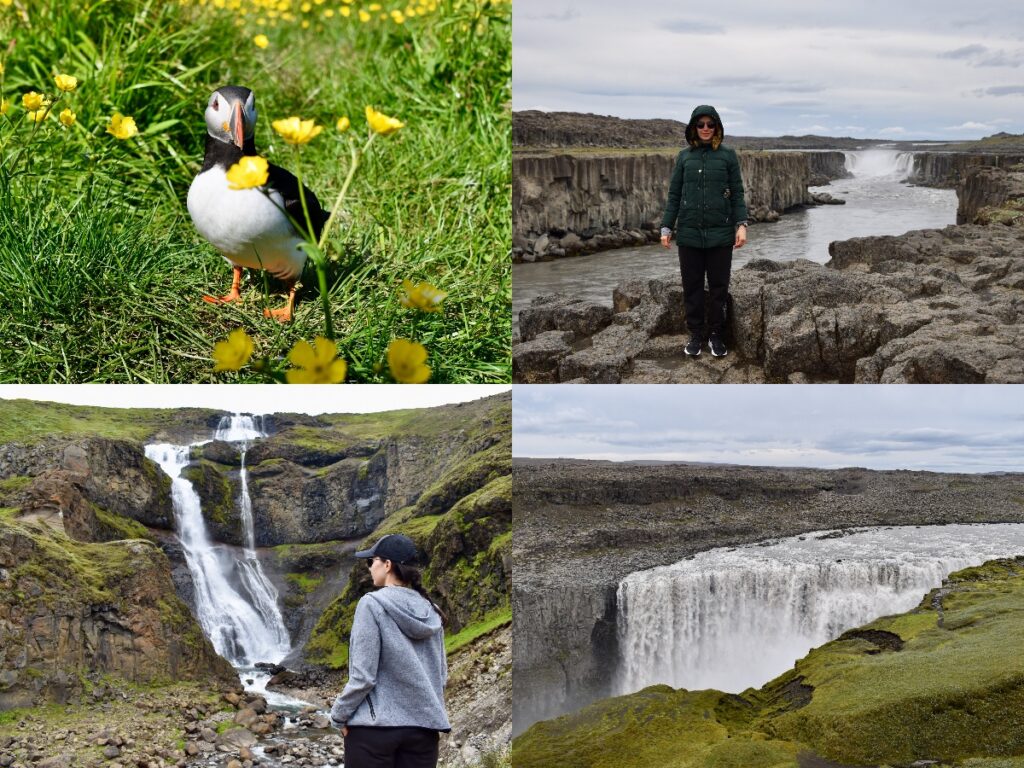
Day 5 – Hverir, Hverfjall, Dimmuborgir, Höfði, Skútustaðagígar, Goðafoss
We arrived at the Hverir geothermal area: boiling mud, steam, the smell of rotten eggs. I was struck by a sign here that said the area was unstable and the geysers could explode at any moment, and that you entered at your own risk.
We climbed the Hverfjall crater, explored the lava fields of Dimmuborgir, and walked through the pseudocraters of Skútustaðagígar. We ended up at Goðafoss.
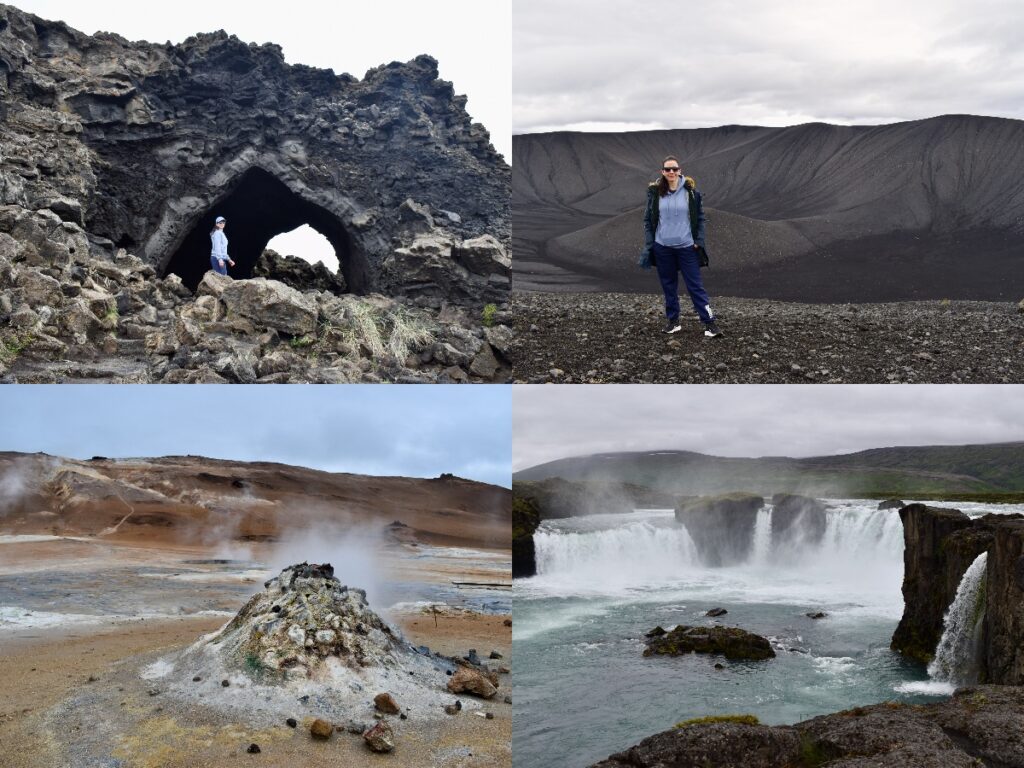
Day 6 – Mígandifoss, Basalt Columns, Fosslaug, Hvitserkur
That day was more relaxed. We visited Mígandifoss, a less touristy waterfall, and some basalt columns that we found by chance. We went to the Fosslaug hot pot, next to a river with an equally impressive waterfall, and then to Hvitserkur, a rock formation that emerges from the sea and is best visited at low tide.

Day 7 – Kolugljúfur, Grábrók
Kolugljúfur Canyon: incredible and rarely visited. Then we took a short hike around the Grábrók crater, already in the west. We arrived in Reykjavík, where we would be based until the end of our stay.

Day 8 – Reykjavík
Diego’s boss had arrived in the city the night before. We took the opportunity to take a tour with him and get to know Reykjavík. As a city, it has very little to offer, which is why people who have been there don’t usually recommend visiting it.
Day 9 – Þingvellir, Geysir, Gullfoss, Langjökull, Kerið
We entered the Golden Circle area. We saw Þingvellir National Park, where the tectonic plates separate. At Geysir, we saw the famous geyser erupt, and then we arrived at Gullfoss, a majestic waterfall. We also visited the Langjökull glacier and the Kerið crater.
On this day, we also stopped on the road because I wanted to take pictures in a field of artic lupine flowers.

Day 10 – Reykjadalur
This was a relatively restful day as we only did a 12-kilometer hike to reach the Reykjadalur thermal river, which is free.
We had brought our swimsuits, but with so many people around, we lost the desire to get in, so we decided to continue the hike a little further up, which turned out to be the right choice. We saw geysers everywhere, sheep, a small waterfall, and a canyon.
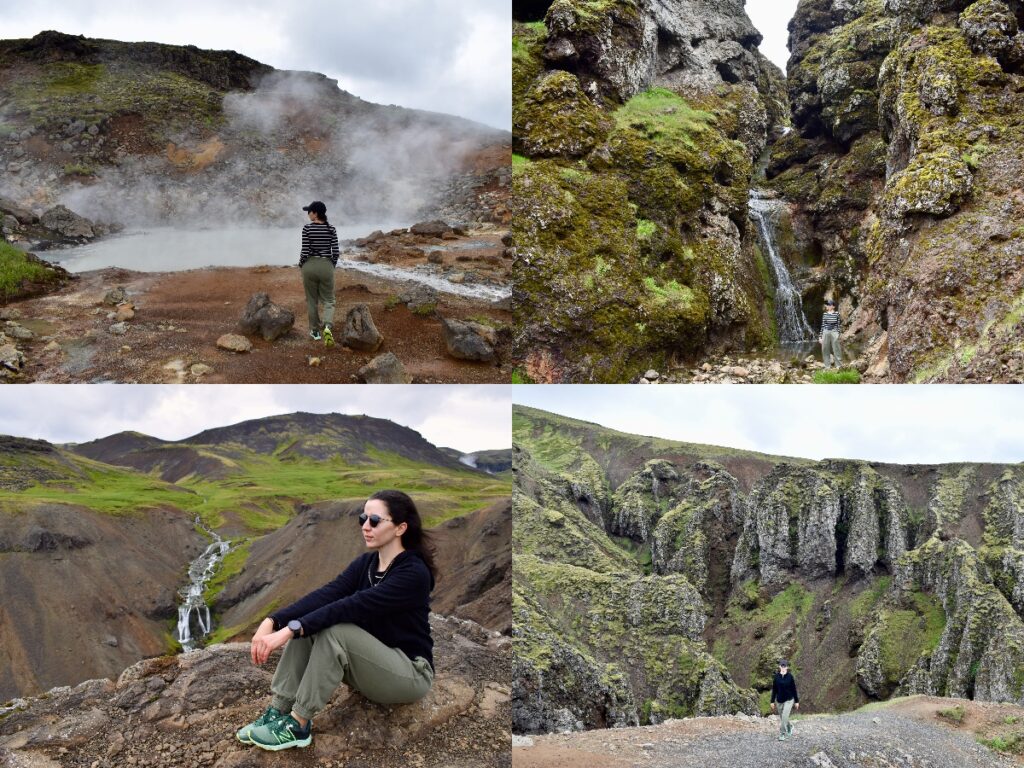
Day 11 – Snaefellsnes: Bjarnarfoss, Rauðfeldsgjá, Arnarstapi, Saxhóll, Skarðsvík, Svöðufoss, Kirkjufellsfoss
On the Snæfellsnes peninsula, we visited waterfalls such as Bjarnarfoss and Svöðufoss, the magical Rauðfeldsgjá gorge, the Arnarstapi cliffs, the Saxhóll crater, and Skarðsvík beach. We ended with the iconic Kirkjufellsfoss.
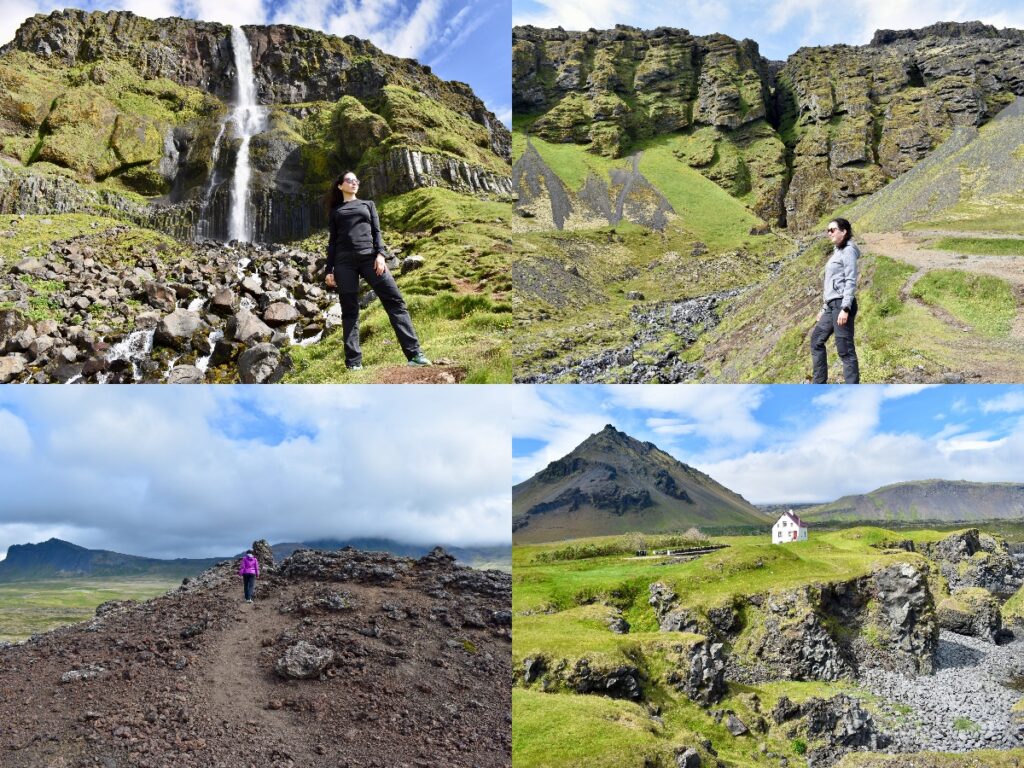
Day 12 – Lake Elliðavatn
On this day, we wanted to visit Glymur, but it was raining and wasn’t going to stop all day. We got there and, to make matters worse, there was no visibility.
As I didn’t feel like doing the hiking trail soaking wet and freezing cold, we returned to our accommodation and in the afternoon, when the sun came out, we went to Lake Elliðavatn, which was right next to our accommodation. We walked around the lake, which was about 10 kilometers.
Day 13 – Glymur
Last day: we hiked to Glymur, which was for years the highest waterfall in Iceland.
This hiking trail was impressive, and we had a sunny day, so we took some wonderful photos.
The trail is difficult, and you must cross a frozen river, but it’s completely worth it. It’s one of the most beautiful things I saw in the country.

Traveling through Iceland was an intense experience, both in terms of the landscapes and the exhaustion. After six days, we felt as if we had been there for two weeks. Not only because of the many hours behind the wheel, but also because of the changing weather, the conditions of the campsites, and the practical difficulties we encountered.
The first thing that surprised me was how inhospitable the landscape was. Coming from Porto and having a house in Ourense, I am used to seeing green everywhere, leafy trees, forests. In Iceland, on the other hand, the landscape is almost lunar.
There is beauty, yes, but also a certain desolation. There are hardly any trees. There is hardly any shade. It is all wind and volcanic rock.
It is also impressive to travel so many miles seeing nature without a trace of human settlements.
The weather was one of the great challenges. Rain, cold, icy wind. And of course, spending the first few nights in campsites didn’t help.
As for tourism, there were also things that surprised me in a bad way. There are places where they charge you to walk on a nature trail. Some had graffiti where people complained about the prices. At all tourist spots, parking costs 7 euros for a maximum of 3 hours. And if you don’t pay, they take your license plate number, and you must pay when you return the rental car.
Although there are ways to avoid paying—such as parking further away—you realize that they are preparing all the free parking lots to start charging there too. Everything is expanding: we saw hotels under construction, new parking lots, restaurants being built everywhere. Tourism in Iceland is growing at a rapid pace. This is also noticeable when you go around because there are a lot of people everywhere.
Iceland is a beautiful country. But it was also a difficult, intense, expensive trip, very different from what one expects when imagining a road trip through nature. We came back exhausted, but with the feeling of having traveled to another world.
In the next post I will tell you a little more about the general experience and about the good and bad things that the country has.
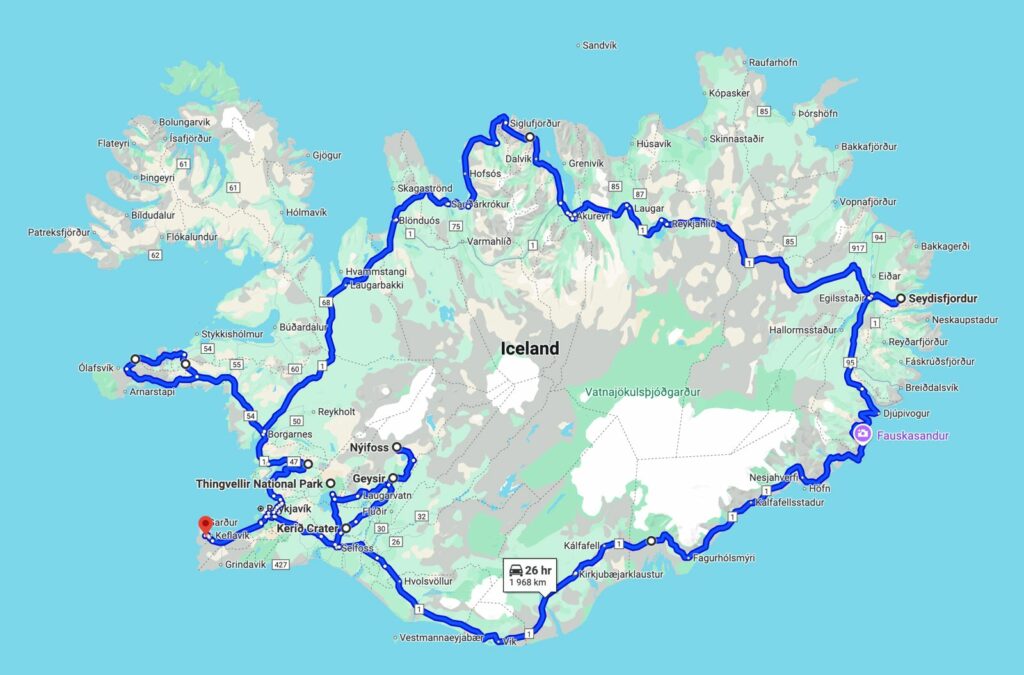

Here are the links to my YouTube channel:
More articles about my trip to Iceland:

